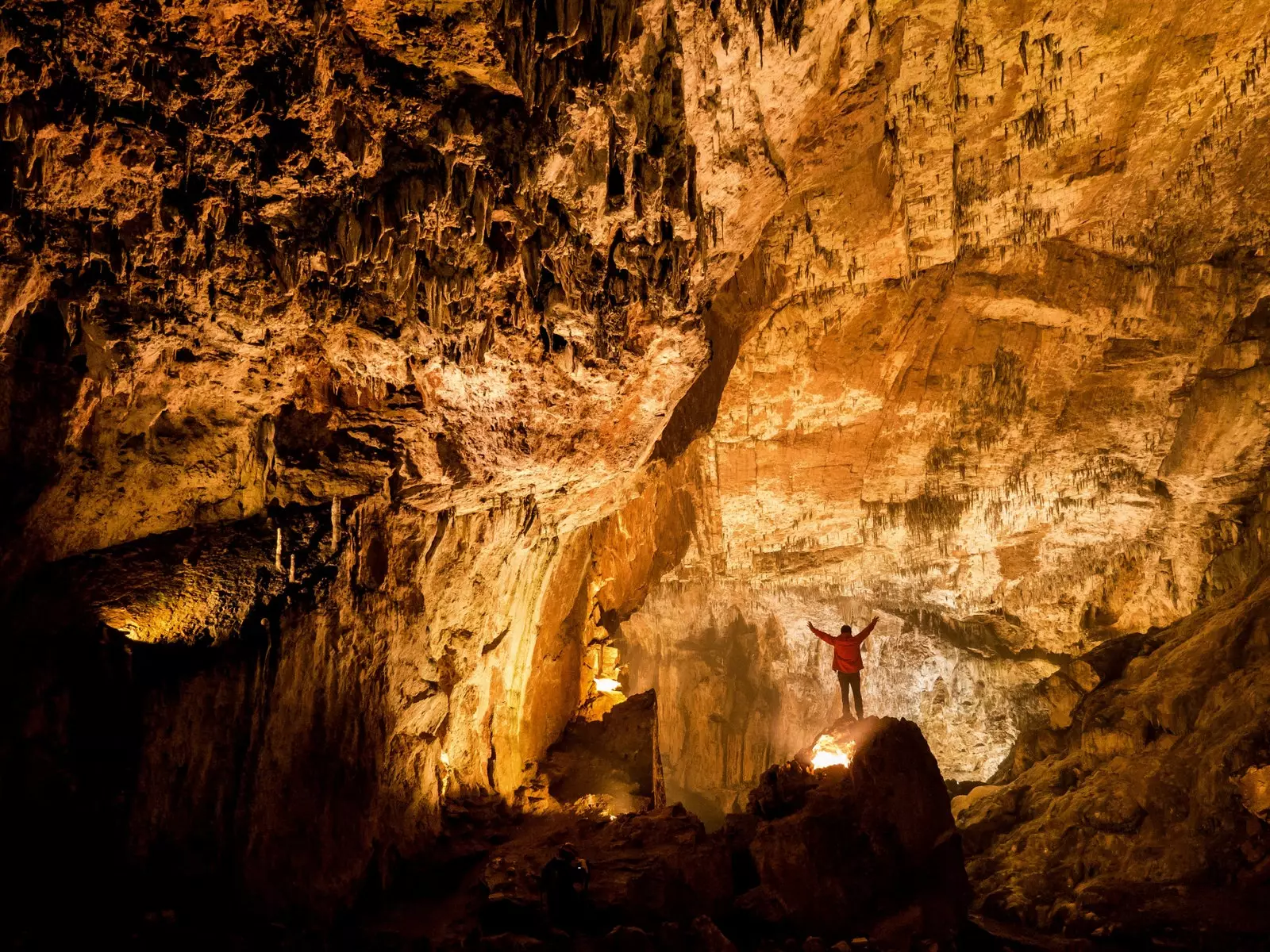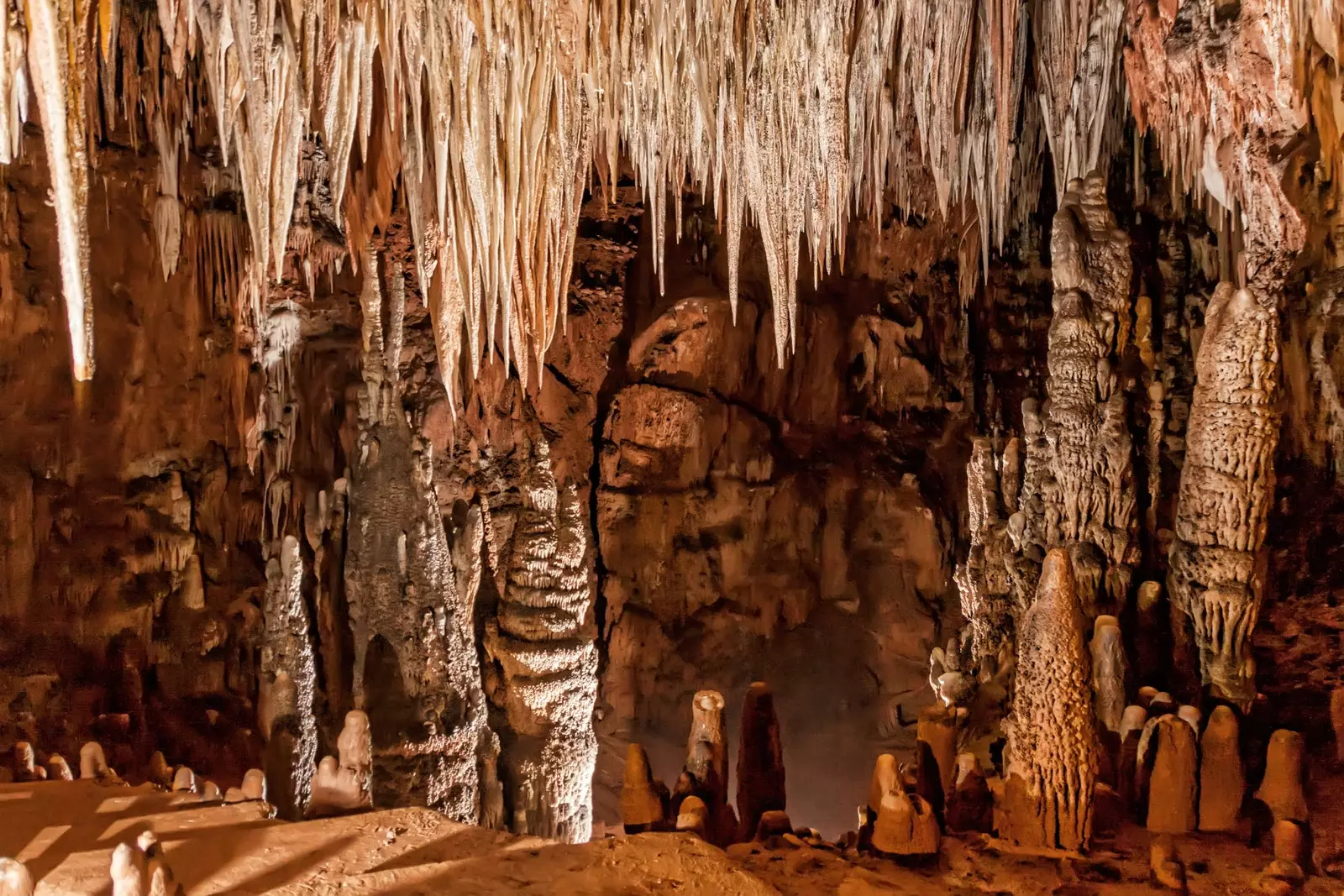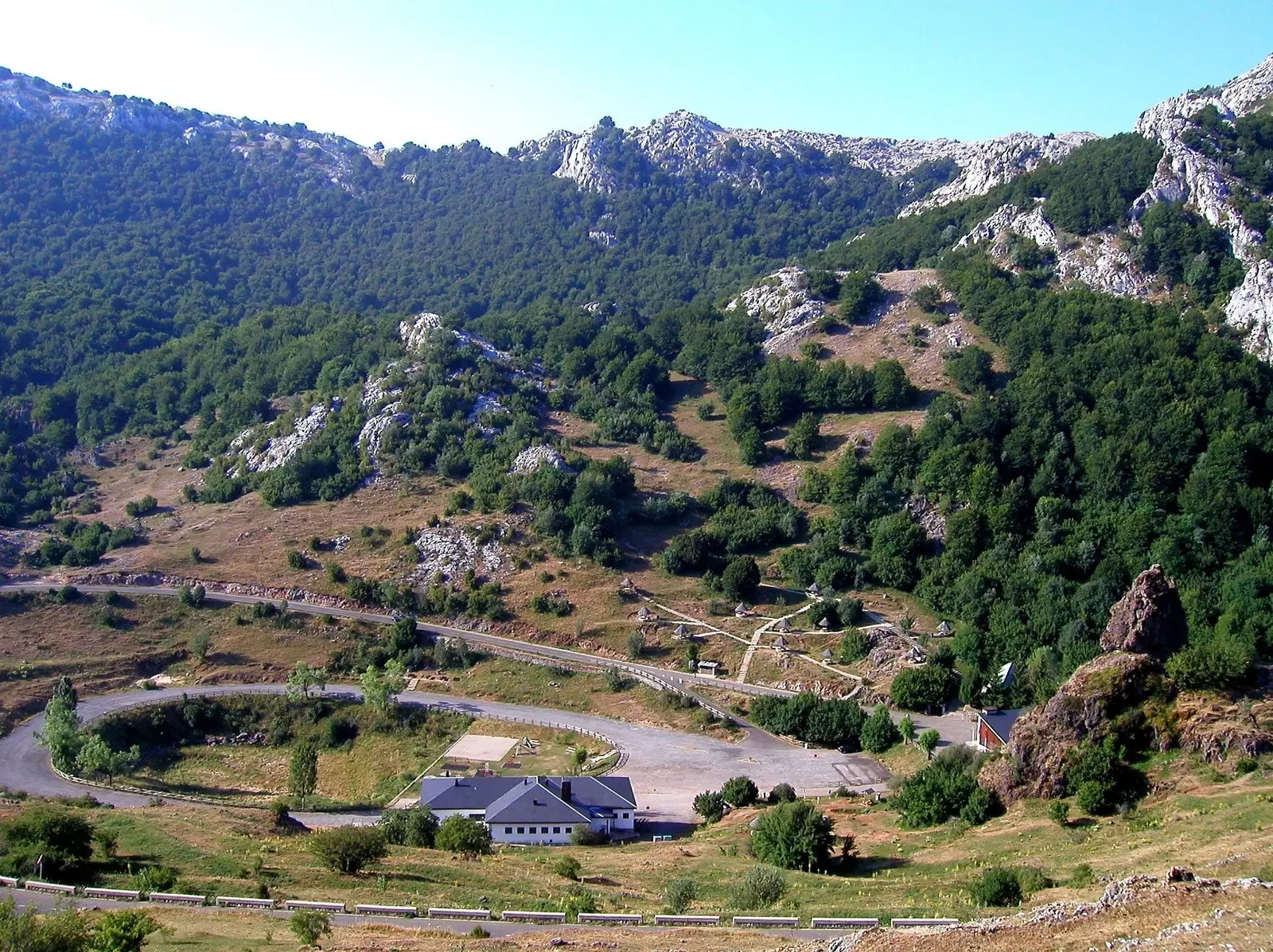
Interior of the Valporquero Caves, in León.
For those of us who were born or grew up in León, the Cuevas de Valporquero are very familiar and 'everyday'. There was no Leonese school that did not include during the school stage some excursion to these underground galleries located in the district of Valporquero de Torío. Is there anything a child would like more than enter the heart of a mountain full of stalactites, stalagmites and columns sculpted by the erosion of water over thousands of years? Even more so if, among its natural (and impossible) forms, we can guess the Tower of Pisa, the famous Virgin and Child, a ghost or even a sinister stalactitic graveyard.
For our parents, the visit to these caves –located at an altitude of 1,309 meters– meant a perfect 'outdoors' plan with which to entertain ourselves during the weekends, since they are less than an hour from the capital of León. And, today, we are the ones who try to instill in our children that **to make a 'trip to the center of the earth' it is not necessary to leave the province of Leon. **
For this reason, we are still surprised when the sharpest outsiders, those who include the Cuevas de Valporquero in their road map through the north of Spain, are fascinated by the spectacular nature of this great work of art sculpted by nature over a million years and which some have begun to call the underground cathedral of León.

The stalactites and stalagmites of the Cuevas de Valporquero have impossible shapes.
TYPE OF VISITS TO THE CAVES OF VALPORQUERO
Seven rooms and galleries (Little Wonders, Great Roundabout, Fairies, Stalactitic Cemetery, Gran Vía, Solitary Column and Wonders) make up the different tours that can be done (in a group and accompanied by a guide) in the Cueva de Valporquero, whose interior temperature of 7ºC is constant throughout the year and the humidity reaches 99% (we, even in summer, we always wear a jacket just in case).
The normal tour, which lasts about an hour, includes access to the first five rooms and the long one (hour and a half), to all of them, so you won't miss either the Lonely Column or the room Wonders, full of stalactites eccentrics, macaroni, flag bearers and speleothems.
Unusual Valporquero is the name of the visit for small groups (recommended for people over 12 years of age) that adds access to the upper part of the Little Wonders room, the entrance gallery to the Water Course, the lower part of the Wonders room, the lake and the end of the cave. With an approximate duration of two and a half hours, the journey it starts in the dark (individual fronts are provided) and It ends with the rooms already lit. Yes indeed, you will have to buy the tickets online in advance, not as in the previous cases, which you can buy them on the same day at the box office until full capacity.

The environment next to the Cuevas de Valporquero.
CAVING CANYONING IN THE CAVES
There are several active tourism companies that offer (more or less from Easter to the long weekend of the Constitution in December) the possibility of delve into the bowels of the Cuevas de Valporquero in a more fun and adventurous way.
Following the Valporquero Watercourse is a caving activity that lasts about five hours and consists of descending –inside the caves– a ravine overcoming natural obstacles such as waterfalls, lakes, siphons or waterfalls while we follow the course of the underground river (sometimes swimming) to go outside, to the La Folfoguera ravine, in the Los Argüellos Biosphere Reserve, where two waterfalls of up to 25 meters high await us that we must rappel down.
Those who need a little more adrenaline can complete the adventure crossing the Torío river on a zip line and those who, on the other hand, prefer a bit of tranquility will only have Approach the Hoces de Vegacervera to see with your own eyes how the water of the river has been diluting the limestone rock until creating impressive vertical walls, giant pots, torcas, sinkholes or sinkholes.
